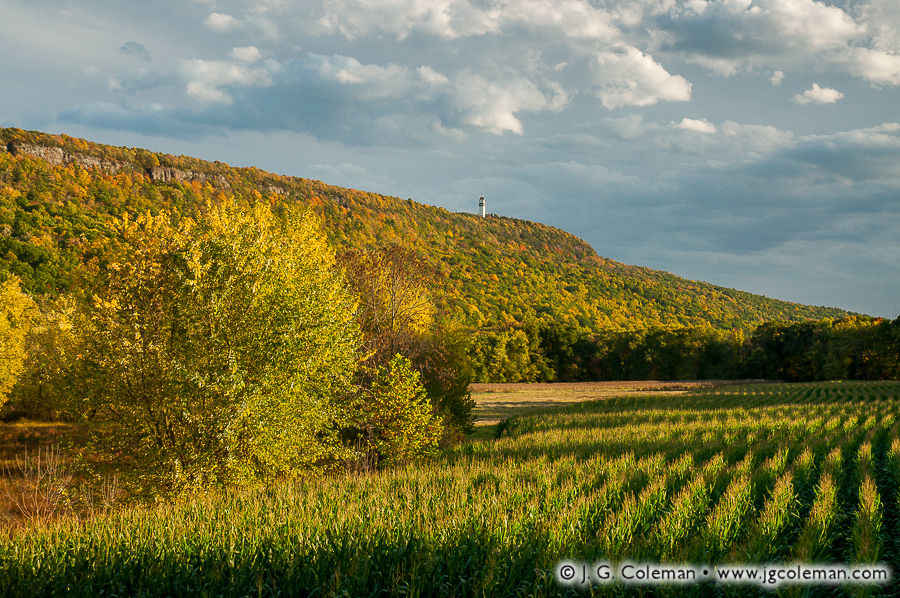
Apple orchard at sunset, Middlefield, Connecticut
© 2016 J. G. Coleman
Rolling hills bristling with apple trees are immersed in shadow as sunlight gently begins to slip from the Connecticut Valley. Snows from a recent storm cling stubbornly to a nearby hillside and the sky is smudged with swirling color as clouds drift overhead.
For a few reasons which I won’t discuss right now, I’ve generally refrained from naming the specific farms that are seen in my Yankee Farmlands project. But Lyman Orchards, which encompasses the apple trees seen in this piece and more than 1,000 surrounding acres, is truly deserving of some special attention.
This orchard is so old, it actually predates the United States. That’s right: it began on a modest 32 acres back in 1741, decades before the American Revolution. As if that alone isn’t fairly impressive, consider that the 275-year-old Lyman Orchards has been owned and operated by the Lyman Family since the very beginning. Today’s eighth-generation owners are hopeful that a ninth-generation of Lymans will step forward to continue this remarkable legacy well into the 21st century.
Purchase a Fine Art Print or Inquire About Licensing
Click here to visit my landing page for “Yankee Farmlands № 54” to buy a beautiful fine art print or inquire about licensing this image.
Want to See More?
Be sure to check out all of my work in my on-going Yankee Farmlands project.




























